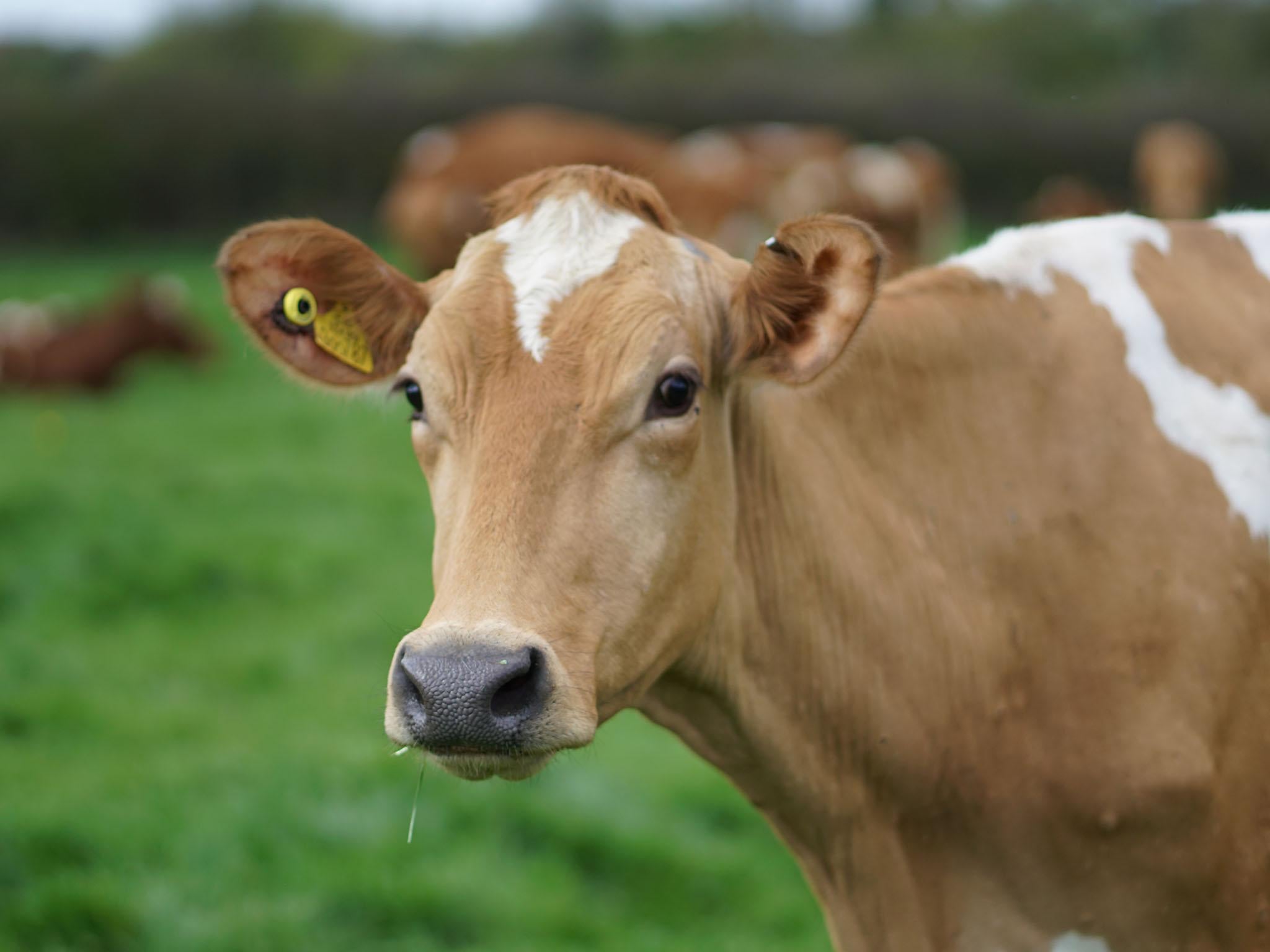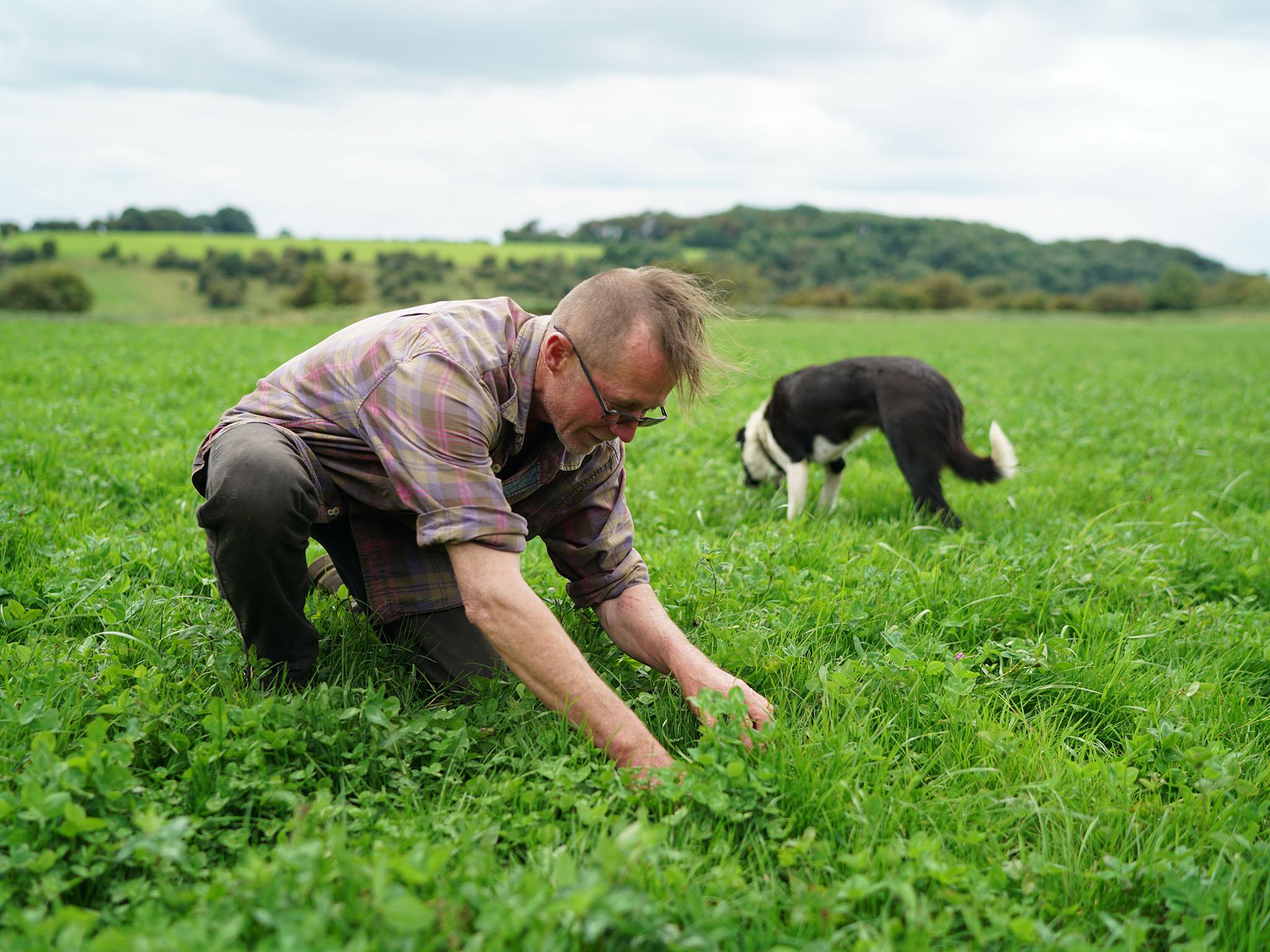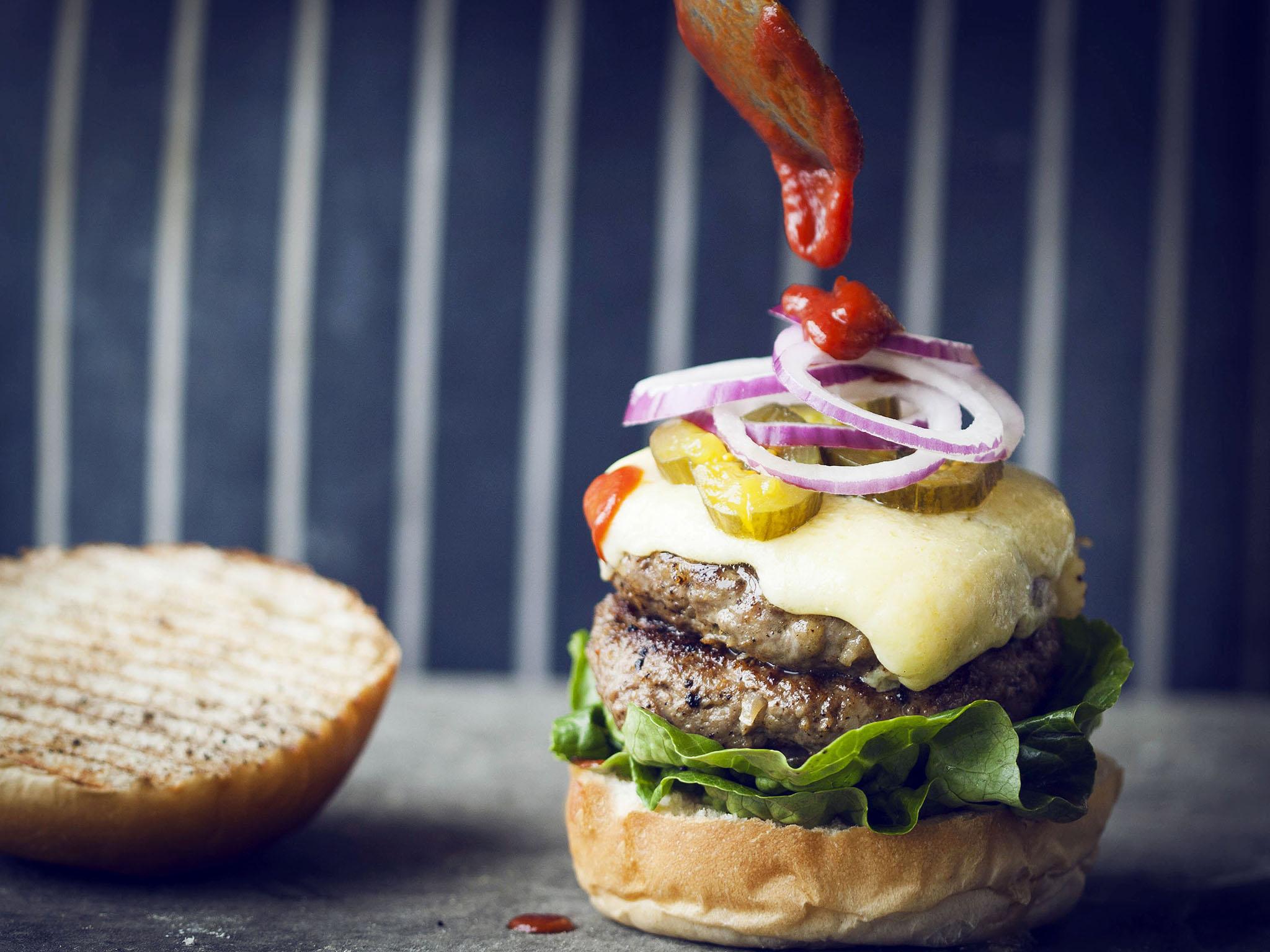The Independent's journalism is supported by our readers. When you purchase through links on our site, we may earn commission.
Could cows help reverse the effects of climate change?
An ecologist has said that ‘mob-grazing’ cows could reverse climate change. So is the grass really greener on the other side? Should you make that cheeseburger a double?

For most people, a beef-eating environmentalist is a contradiction. Ask climate experts what they think about meat and they will tell you that we should be eating a lot less of it. The United Nations has calculated that animal farming is responsible for 14.5 per cent of all greenhouse gas emissions and red meat and dairy production accounts for well over half of that (65 per cent).
However, there is a small and growing community of farmers, scientists and academics who think rearing livestock and eating more, or at least maintaining, the amount of red meat we consume is part of the solution to climate change.
They argue that well-managed livestock are the key to producing healthier soils that can take carbon dioxide out of the atmosphere and store them in the ground.
The trick is to get livestock to copy the movements of wild herding animals in nature. After all, cows and sheep are prey animals, and in the wild they would move regularly in a bunched group to find fresh grass to graze on and keep predators at a distance.
Commonly called “mob grazing”, its supporters argue that it allows farmers to produce more meat per acre, without using chemicals or grains, and that the system produces healthier beef.
Sounds too good to be true?
Conventional beef vs mob-grazed beef
In conventional grazing systems, livestock is forced to graze on the same couple of acres of grassland for very long periods (weeks, sometimes months). This is where the problems start because farmed animals, unlike their wild counterparts, can be much more selective about what they eat, grazing hardest on the plants they like best. Over time, the cow’s favourite grass is overgrazed, becoming so weak that other weeds begin to push it out.
To get rid of the weeds and get the good grass to grow, the farmer resorts to chemical fertilisers. However, fertilisers replace the nutrients that the soil would usually provide, and without that purpose, organic matter in the soil decreases and the diversity of grass species declines as well.
Much like us humans, farmed animals need a good mix of nutrients and minerals, but heavily fertilised grass leaves them undernourished. And because the grass is less nutritious than conventional systems, the farmer has to add grain to the cattle’s diet to keep them producing quality milk after calving or to fatten them up before they go to slaughter.
It is this type of industrial animal farming that attracts widespread damnation from environmentalists.
The whole process is damaging on many different levels: the production of chemical fertilisers requires fossil fuel use; the grains fed to livestock waste precious natural resources; fertilisers applied to the soil release harmful nitrous oxide into the atmosphere; and many tons of methane are belched into the air by grazing cattle.
Under mob-grazing systems, however, things are a little different.

The farmer will put their cows out to graze on a tiny acre of grass for one day, forcing them to eat everything on the ground, not just their favourite grass. The next day the farmer will then move the herd onto a different acre of grass, again forcing them to graze everything on the ground, and again not just their favourite grass.
The farmer repeats this process over and over again.
The idea is that the herd will not graze on that first acre of grass for several months, giving it a much longer rest period than conventional livestock farming.
This resting period is said to be crucial because it allows the grass to grow taller, shuts out the weeds and encourages the growth of diverse grasses. This is supposedly a win-win for the farmer: there is no need to use fertiliser to artificially grow the grass or feed the animals grain as they can get all the nutrients they need from what they graze.
By producing healthier grassland, cattle grazed on rotation are said to increase the soil’s capacity to store carbon. This is because bigger and healthier grass has the capacity to take up more carbon dioxide from the atmosphere, storing part of this in their roots, and thus sequestering it into the soil.
This carbon storing process is at the heart of the beef-lovers’ radical solution to climate change. Nicolette Niman, an American rancher and environmental lawyer, argues in her book Defending Beef that “cattle are not, in fact, a climate problem at all; instead cattle are actually amongst the most practical, cost-effective solutions to the warming of the planet”.
But can cows actually reverse climate change?
One wildlife ecologist thinks they can. Allan Savory has spent decades advocating the use of mob-grazing techniques to tackle desertification in Africa. His theory goes against conventional wisdom, arguing that rather than reducing the numbers of livestock on grasslands, we should be increasing them.
In a Ted Talk that has since garnered over four million views, Savory says that managing livestock on rotation can take enough carbon out of the atmosphere to return us to pre-industrial levels. And it is Savory’s arguments that have influenced many livestock farmers in the UK and United States to introduce mob-grazing techniques.
In the places where these methods have been tried, a handful of studies show that they increase soil fertility, and in areas of degraded land, particularly in Africa, they can significantly increase the amount of carbon stored in the soil.
A 2007 study by the Intergovernmental Panel on Climate Change estimates that these improved grazing methods could mitigate around 90 per cent of agriculture’s contribution to climate change.
Does that mean we can eat red meat without green-guilt? Maybe not entirely...

For a start, most of the beef and cheese you eat in the UK will not have used these mob-grazing methods. Unless it is has been certified as grass-fed, the chances are that the farmer has finished their livestock on some sort of grain.
The scientific community is also sceptical. A recent paper released by the Food Climate Research Network, “Grazed and Confused”, challenges many of the claims made by the mob-grazing lobby.
The study says fairly definitively that the ability of livestock to offset its own emissions has been overstated and at best techniques like mob-grazing can offset only as much as 20 per cent to 60 per cent of the emissions from animal farming.
The environmentalist campaigner and plant-based diet advocate George Monbiot has since argued that this latest assessment is the final nail in the coffin for livestock farming.
What does a sustainable diet look like then?
It seems that there is no one special diet that everyone can follow religiously in order to “save the planet”.
Provenance is an important but often overlooked factor. Where you live will affect how you can eat sustainably, which is why global assessments like the one in the “Grazed and Confused” report create so much debate.
In the UK, meat and dairy will remain an important part of a sustainable food system. Two-thirds of the land is grass and turning that over to grow crops would put at risk the 10 billion tons of carbon that these grasses help to store.
The Sustainable Food Trust, founded by the environmentalist and farmer Patrick Holden, believes that the most sustainable way to produce food in the UK is to reintroduce mixed farming systems, that integrate both animal and crop production.
Properly managed grazing, according to the Sustainable Food Trust, can supply low-emission meat and dairy products while building the necessary fertility in our soils to grow healthier fruits, vegetables and legumes.
It’s also worth remembering that British farming accounts for only half of the Britain’s total greenhouse emissions from food production. The rest is estimated to come from processing, transportation, storage, retailing and food preparation .
That means food grown locally, produced without fertilisers or industrial grains and with minimal processing is better for the planet.
Damian Hind is head of communications at Farmdrop, where this article first appeared (farmdrop.co.uk)
Join our commenting forum
Join thought-provoking conversations, follow other Independent readers and see their replies
Comments
Bookmark popover
Removed from bookmarks